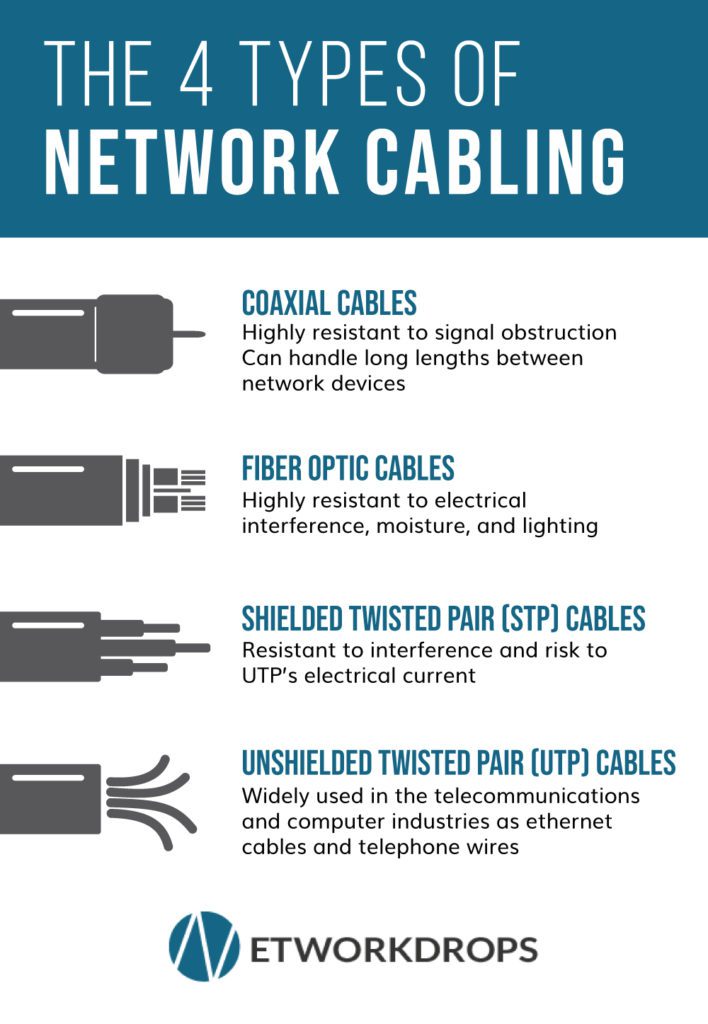Networking cables are a type of networking hardware used to connect a network device to one or more other network devices, or to connect two or more devices to a single computer or network device.
Network cables act as a medium through which information and data travel from one network device to another. The type of cable used for a network depends on the network’s topology, size, and procedure. The different types of network cables act as the supporting basis of the network infrastructure.

Selecting the correct type of network and ethernet cabling can affect many different business functions because enterprise network admins utilize new technologies. The type of network cable used in a network infrastructure is one of the most vital aspects of networking across various industries.
Coaxial Cable
Coaxial cables have a single copper conductor at the center, while a plastic layer provides insulation between the center conductor and braided metal shield. The metal shield blocks outside interference from fluorescent lights, motors, and other computers.
Coaxial cabling is highly resistant to signal obstruction, although it can be complex to install. It can handle greater cable lengths between network devices than twisted pair cables. The two types of coaxial cables are thick coaxial and thin coaxial.
Fiber Optic Cable
Fiber optic cables possess a center glass core surrounded by multiple layers of protective materials. They avoid electrical obstruction by transmitting light instead of electronic signals, making them perfect for environments with large amounts of electrical interference. Fiber optic cables have become the standard for connecting networks across buildings because of their resistance to moisture and lighting.
Shielded Twisted Pair (STP) Cable
Often referred to colloquially as simply ethernet cables, STP cables employ a special type of copper telephone wiring used for business installations. An external shield functioning as a ground is added to the standard twisted pair of telephone wires.
Shielded twisted pair cables can be perfect if you want to set up cables in an area with potential interference and risks to an unshielded twisted pair cable’s electrical current. Shielded twisted pair cables can also help to expand the distance between the cables.
Unshielded Twisted Pair (UTP) Cable
Unshielded twisted pair (UTP) cables are broadly used in the telecommunications and computer industries as ethernet cables and telephone wires. In a UTP cable, conductors forming a single circuit are twisted around one another to cancel out electromagnetic interference (EMI) from external sources.
Are you looking for your own data cabling installation for Monmouth or Mercer Counties? If so, don’t hesitate to give our team a call today!
